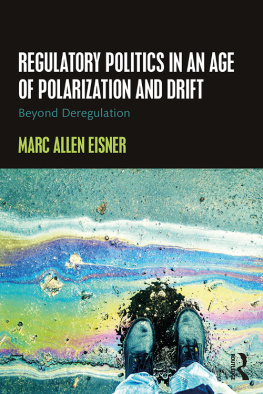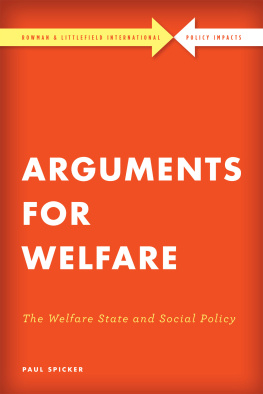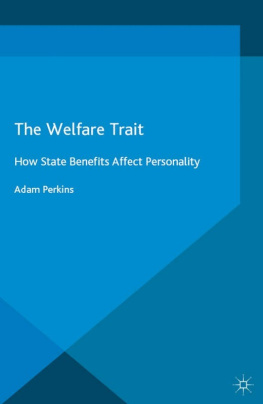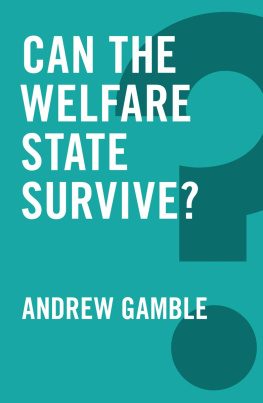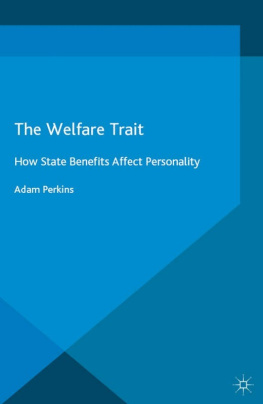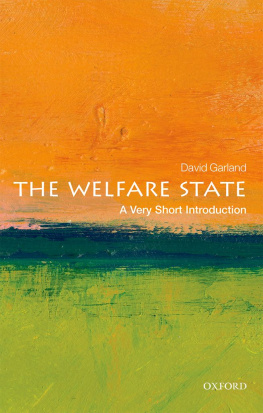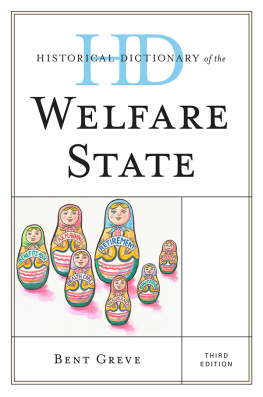Cover
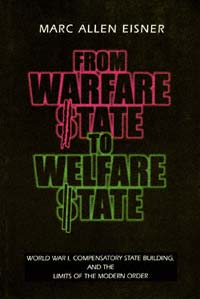
| title | : | From Warfare State to Welfare State : World War I, Compensatory State-building, and the Limits of the Modern Order |
| author | : | Eisner, Marc Allen. |
| publisher | : | Pennsylvania State University Press |
| isbn10 | asin | : |
| print isbn13 | : | 9780271019963 |
| ebook isbn13 | : | 9780585382074 |
| language | : | English |
| subject | Political planning--United States--History--20th century, United States--Politics and government--1919-1933, United States--Politics and government--1933-1945, United States--Economic policy--To 1933, United States--Economic policy--1933-1945, World War, |
| publication date | : | 2000 |
| lcc | : | JK468.P64E57 2000eb |
| ddc | : | 320.973/09/042 |
| subject | : | Political planning--United States--History--20th century, United States--Politics and government--1919-1933, United States--Politics and government--1933-1945, United States--Economic policy--To 1933, United States--Economic policy--1933-1945, World War, |
Page i
FromWARFARE STATEtoWELFARE STATE
Page ii
Page iii
MARC ALLEN EISNER
FromWARFARE STATE toWELFARE STATE
World War I,Compensatory State Building,and theLimits of the Modern Order
The Pennsylvania StateUniversity Press
University Park, Pennsylvania
Page iv
Library of Congress Cataloging-in-Publication Data
Eisner, Marc Allen.
From warfare state to welfare state: World War I, compensatory state-building, and the limits of the modern order / Marc Allen Eisner.
p. cm.
Includes bibliographical references (p. ) and index.
ISBN 0-271-01995-6 (cloth: alk. paper)
ISBN 0-271-01996-4 (paper: alk. paper)
1. Political planningUnited StatesHistory20th century. 2. United StatesPolitics and government19191933. 3. United StatesPolitics and government19331945. 4. United StatesEconomic policyTo 1933. 5. United StatesEconomic policy19331945. 6. World War, 19141918United States. I. Title.
| JK468.P64E57 2000 | 99-41200 |
| 320.97309042dc21 | CIP |
Copyright 2000 The Pennsylvania State University
All rights reserved
Printed in the United States of America
Published by The Pennsylvania State University Press,
University Park, PA 16802-1003
It is the policy of The Pennsylvania State University Press to use acid-free paper for the first printing of all clothbound books. Publications on uncoated stock satisfy the minimum requirements of American National Standard for Information SciencesPermanence of Paper for Printed Library Materials, ANSI Z39.48-1992.
Page v
For Patricia
Page vi
Page vii
Contents
| Acknowledgments | ix |
|
|
| 1 Crisis, Continuity, and Political Change | 1 |
|
|
| Part I: Crisis and the Construction of the Modern State |
| 2 War Making, State Making, and American Political Development | 19 |
| 3 Mobilization, Demobilization, and the Legacy of the Great War | 45 |
|
|
| Part II: Demobilization and the Dissemination of a Model |
| 4 Associationalism and the Regulation of Business | 89 |
| 5 From Warfare Crisis to Welfare Capitalism | 139 |
| 6 Agricultural Adversity and the Curse of the Surplus | 181 |
| 7 Business Cycles, Industrial Stability, and Economic Management | 221 |
|
|
| Part III: Peacetime Mobilization and the Modern State |
| 8 Hoover, the Depression, and the Limits of Associationalism | 261 |
| 9 A New Deal for an Old Model | 299 |
| 10 The Great War, New Battles, and the Limits of the Modern State | 349 |
|
|
| Index | 360 |
|
Page viii
Page ix
Acknowledgments
This book is the product of some five years of research, writing, revision, and resta seemingly endless cycle. During this period, I have presented the material to diverse audiences in classrooms, seminar rooms, conference halls, and at the dinner table. I have benefited from the comments (and endurance!) of my colleagues in the Government Department and the John E. Andrus Center for Public Affairs at Wesleyan University, my students at Wesleyan, and fellow panelists and audience members at APSA, NEPSA, and MWPSA conferences. I also benefited from the comments of Ellis Hawley and Peri Arnold, readers for Penn State Press and, more important, individuals that have forever changed the ways in which the larger world understands much of the material addressed in this volume.
As always, I reserve the greatest thanks for my wife, Patricia, and my sons, Benjamin and Jonathan. On a daily basis they provide a foundation upon which all else rests. This book, as so much else, is dedicated to Patricia.
Page x
Page 1
Crisis, Continuity, and Political Change
When dividing U.S. history into discrete eras, the Great Depression is often presented, along with the Civil War, as one of those distinctive episodes that permanently changed the nation's developmental trajectory. For many decades, accounts of American political development assumed that the modern American welfare state was born in the New Deal, a child of the Great Depression. The story moved along well-worn lines: Following the bleak days of the Hoover administration, Franklin D. Roosevelt ascended to the presidency to deliver the nation. The shopworn system of the 1920s was replaced wholesale with a new assemblage of innovative policies and agencies designed to reform the economy and discipline capitalism in the name of the common man. The New Deal state marked the triumph of liberal reform and the realization of the promise of progressivism. Its key innovations provided a firm footing for postwar economic growth and social reform. Many concluded that America's emergence as the central political-economic power in the decades following World War II would have been difficult without the prior creation of the New Deal state. The standard story of Roosevelt's triumphal re-creation of the American system was deficient in one key respect: its accuracy. It may have been a useful fiction. It provided a convenient tool of periodization and a means of interpreting our own history and the significance of
Page 2
shifting political allegiances in the contemporary period. However, as a growing number of revisionist historians and students of American political development have observed, a careful examination of the historical record reveals that much of New Deal was less than new. Certainly, the New Deal brought important changes in patterns of state-society relations. However, there was much continuity with events of the previous decades. Indeed, any survey of the twentieth century for the event that changed the trajectory of American political development should necessarily nominate World War I. The lessons of war were widely disseminated during the New Era of the 1920s and 1930s. The New Deal, in this account, must be seen neither in isolation nor as a reaction to previous decades. Rather, it must be understood as part of the ongoing evolution of the American state along a trajectory that had already been put into place. To better appreciate the position of the New Deal in this trajectory, we must first reflect on the role crisis plays in our understanding of political change.
Next page

